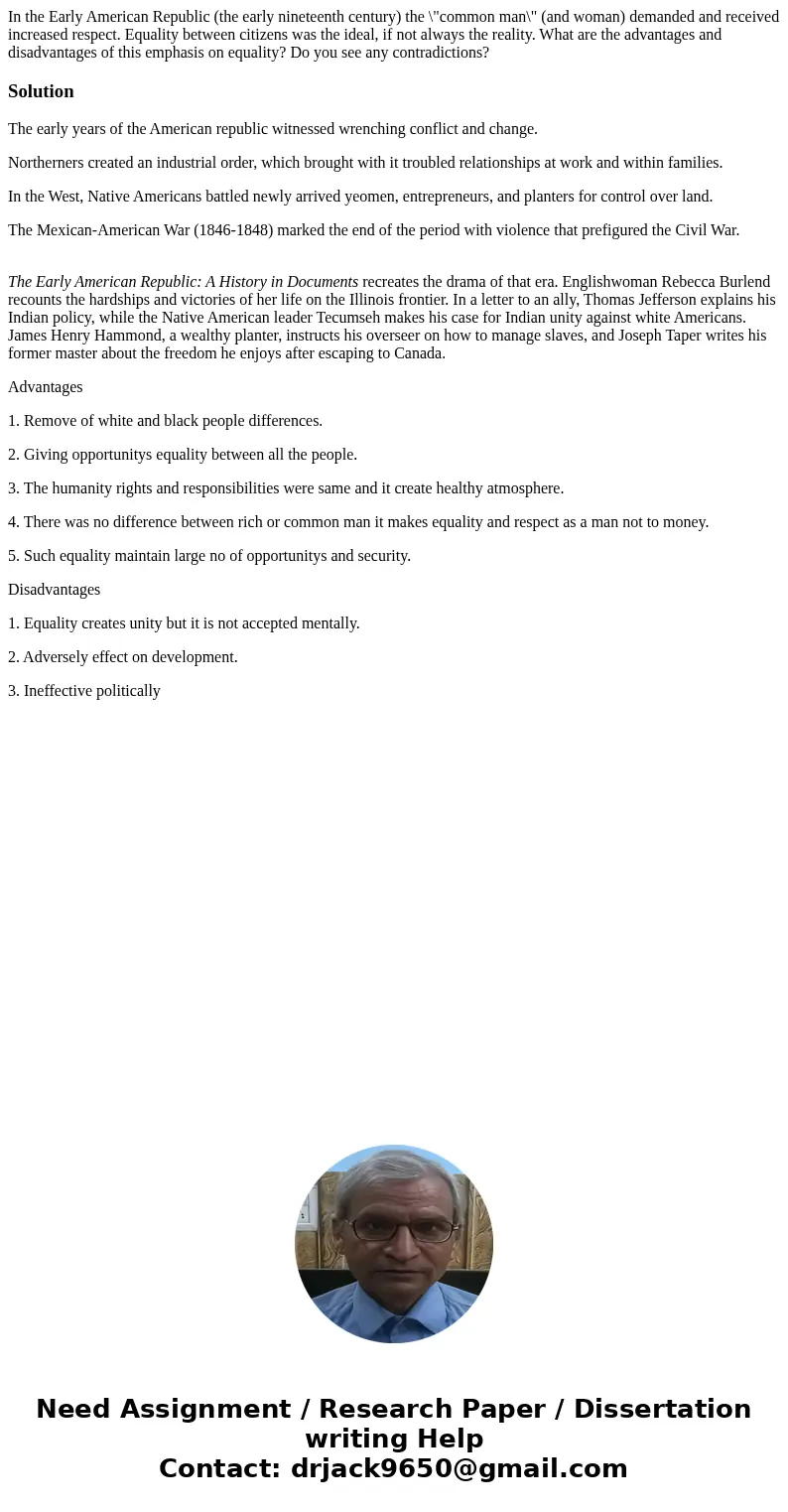In the Early American Republic the early nineteenth century
Solution
The early years of the American republic witnessed wrenching conflict and change.
Northerners created an industrial order, which brought with it troubled relationships at work and within families.
In the West, Native Americans battled newly arrived yeomen, entrepreneurs, and planters for control over land.
The Mexican-American War (1846-1848) marked the end of the period with violence that prefigured the Civil War.
The Early American Republic: A History in Documents recreates the drama of that era. Englishwoman Rebecca Burlend recounts the hardships and victories of her life on the Illinois frontier. In a letter to an ally, Thomas Jefferson explains his Indian policy, while the Native American leader Tecumseh makes his case for Indian unity against white Americans. James Henry Hammond, a wealthy planter, instructs his overseer on how to manage slaves, and Joseph Taper writes his former master about the freedom he enjoys after escaping to Canada.
Advantages
1. Remove of white and black people differences.
2. Giving opportunitys equality between all the people.
3. The humanity rights and responsibilities were same and it create healthy atmosphere.
4. There was no difference between rich or common man it makes equality and respect as a man not to money.
5. Such equality maintain large no of opportunitys and security.
Disadvantages
1. Equality creates unity but it is not accepted mentally.
2. Adversely effect on development.
3. Ineffective politically

 Homework Sourse
Homework Sourse